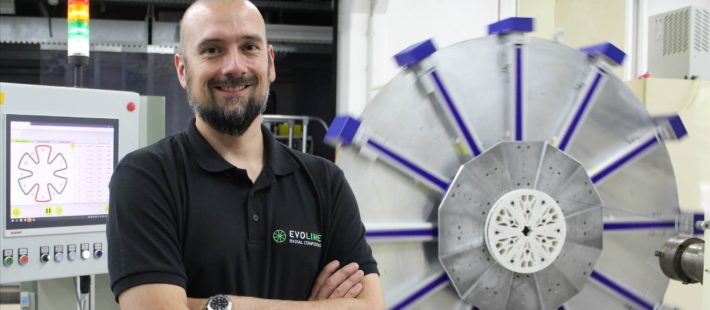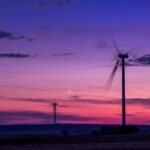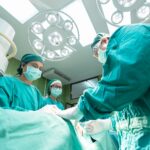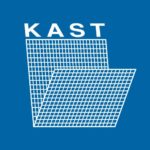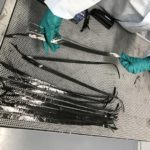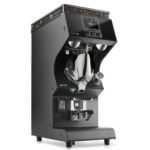The spoke wheels can be found on bicycles, cars, and in industry. In sports, spoke wheels made of lightweight fiber-reinforced plastics are widely used. Until now, production has been associated with high costs and thus unattractive for many applications. However, this is not the case with a new method developed by Kaiserslautern researchers. Their method allows automated production tailored to customer requirements. The team is bringing their innovative technology to the market through the newly founded start-up Evolime GmbH.
It takes a great deal of time to produce spoke wheels made of fiber-reinforced plastics, also known as FRP for short. “The process involves numerous work steps, and a lot can only be done manually,” says Dr. Marcel Bücker, who has long been involved with composite materials. “In addition, a lot of the expensive material has to be used for this, because a large amount of waste is produced.”
However, the method developed by Bücker and his colleagues Dr. Thomas Robbert, Valentin Hörtdörfer and Frank Belyea at the Institute for Composite Materials at Technische Universität Kaiserslautern (Germany) is completely different. “Compared to conventional methods, we are able to manufacture wheels much more efficiently thanks to our three-stage process,” explains Robbert, a business economist. Furthermore, the method does not produce waste and therefore has an excellent environmental balance.
“Basically, this is a so-called wet winding process in which fibers are automatically wound onto small molded parts and simultaneously formed into wheel structures,” explains Bücker. The engineers begin with a 3-D printer to produce molds made of ecologically degradable plastic. Then, the exact form is determined by a computer program.
The molds are then used to produce the wheels and are wrapped with a fiber tape on a rotating tooling plate. “This will continue until the desired thickness for the spokes is achieved. Then the still soft strip from FRP is formed into spokes,” continues Bücker. In a final step, another strip of fiber tape is wound around the spokes to form a complete wheel. After the plastic has hardened, the molded parts are removed. The spoke wheel is ready for use.
What is special: depending on customer requirements, for example, the size of the wheel or the number of spokes can be adjusted as desired. In many cases, this can be done “at the push of a button” using specially developed software. This allows individual solutions for customers to be implemented very quickly. High digital integration enables the start-up company to achieve very short delivery times for a wide range of components.
The advantages open the door to new industries and applications where low weight combined with high performance is crucial, such as high-performance grinding wheels in manufacturing plants, or gears for wind power transmissions. Moreover, the technology can improve customization of bicycle wheels or automobile rims.
Featured image: Dr.-Ing. Marcel Bücker stands in front of the running production plant, a rotating tooling plate. Credit: Technische Universität Kaiserslautern
Source Phys.org


